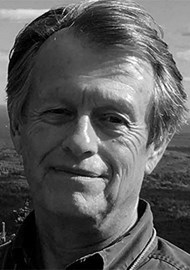Part 2 of this topic is available here.
The Doctor of Audiology degree is required for clinical practice in the USA. In part one of a two-part series, Professor Hall reviews the evolution of academic credentialing for American audiologists, beginning with the origins of the profession soon after World War II.
Origins of audiology in the USA
The origins of audiology in the USA can be traced to the World War II era [1]. Readers interested in learning more about the people and events that contributed to the emergence of audiology as a profession in the USA are referred to several documents. One, a monograph published as a special issue of Audiology Today, includes priceless black and white photographs of equipment for hearing assessment and some of early pioneers of the profession. The editor of the 2002 monograph was Dr Moe Bergman, one of the principle players in the development of the new profession [2]. Two slim volumes written by James Jerger also provide invaluable and rather entertaining historical insights about the origins of our profession, including unresolved questions about the person or persons who first coined the term ‘audiology’ [3,4].
“Most of these innovative researchers – our audiology grandfathers – were born in the 1890s during the same era as the biological grandfathers of many of us ‘senior’ audiologists.”
The scientific foundation for audiology in the USA was built in the early half of the 20th century. Much of the basic research underlying modern clinical audiology was conducted at the Psychoacoustic Laboratory (PAL) at Harvard University in Cambridge, Massachusetts or the Bell Telephone Laboratories in Murray Hill, New Jersey. Most audiologists are familiar with the names of these early hearing scientists who focused their research efforts on psychoacoustics and auditory physiology while also publishing the first books devoted to hearing science and assessment; among them were SS Stevens, Hallowell Davis, George von Bekesy, Robert Galambos and Ira Hirsch at the PAL and Harvey Fletcher at Bell Laboratories. Interestingly, most of these innovative researchers - our audiology grandfathers - were born in the 1890s during the same era as the biological grandfathers of many of us ‘senior’ audiologists. Hearing research in the 1920s through 1950s established many of the principles of auditory science and hearing assessment procedures that we employ, even today.
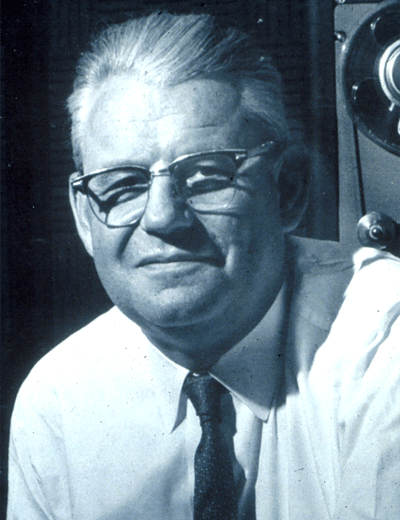
Figure 1. Raymond Carhart who, soon after World War II, founded the first
formal educational programme for audiology at Northwestern University.
In the early 1940s, many thousands of men and women in the US military branches suffered from permanent hearing loss. The most common etiology was service-related noise-induced hearing loss that was not treatable medically or surgically. Unfortunately, there were, at the time, no non-medical healthcare professionals with the knowledge and skills required for diagnosis or rehabilitation of military personnel with hearing impairment. In 1944, Dr Raymond Carhart was commissioned as a captain in the US Army and specifically charged with the responsibility of developing an aural rehabilitation programme for hearing- impaired servicemen and servicewomen. Carhart was then a young, 30-year-old professor at Northwestern University with a PhD in speech pathology, experimental phonetics, and psychology (See Figure 1). Upon returning to Northwestern University after the war, Dr Carhart founded the first formal educational programme for audiologists and he mentored over 40 doctoral students. Among them was an impressive number of future leaders in the new profession, most notably James Jerger.
Upgrading to graduate education
From the beginning of the profession until 1965, an undergraduate bachelor’s degree was required for clinical audiologists in the USA. Then, the entry level academic credential for audiology was upgraded to a master’s degree followed by a nine-month period of supervised clinical experience. The scope of practice in audiology continued to expand, particularly with advances in technology for diagnosis and management of hearing loss. For example, by the 1980s audiologists were utilising rather sophisticated diagnostic techniques such as the auditory brainstem response, as well as complex digital hearing aid technology and cochlear implants in the management of children and adults with hearing loss. There was growing concern within the profession that many audiologists graduating with a master’s degree lacked adequate knowledge and skills for the practice of audiology. Equally worrisome was the inconsistent quality of clinical training and experience during the nine-month post-graduate ‘clinical fellowship’. In addition, other diagnostically-focused health professions, like optometry and dentistry, required a doctoral degree for clinical practice, in contrast to the master’s level education of audiologists.
Transition to Doctor of Audiology (AuD) Degree
With the formation of the American Academy of Audiology (AAA) in 1988, the intensified calls for expanding graduate- level education led to organised efforts to promote a doctoral-level degree in audiology. Indeed, the programme of the first AAA convention in 1989 included a spirited so-called cross-fire debate entitled, ‘Audiology Needs a Professional Doctorate’. Much of the enthusiasm for a doctoral degree arose from audiologists in private practice within the newly-formed Academy of Dispensing Audiologists (ADA) and a lot of the AAA leadership. These efforts were certainly not universally endorsed by all academic leaders. Nonetheless, the notion of a professional doctorate degree in audiology steadily gathered momentum in the early 1990s. Evidence of the progress on this concept and some of its early proponents can be found in the programme of the 1992 AAA Convention (see Figure 2). Interestingly, the abstract for the evening session includes reference to formation of the Council of AuD Degree programmes, even though none yet existed.
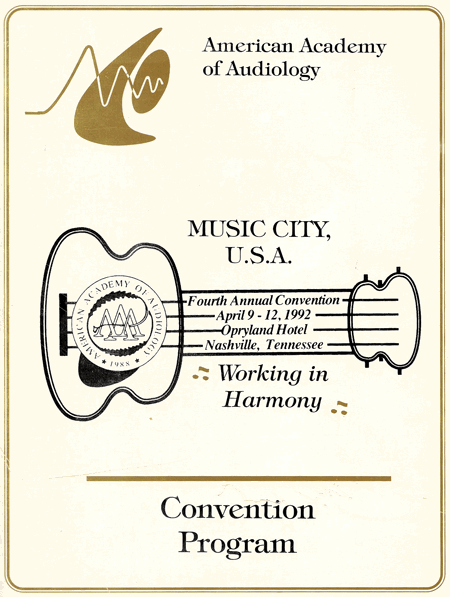
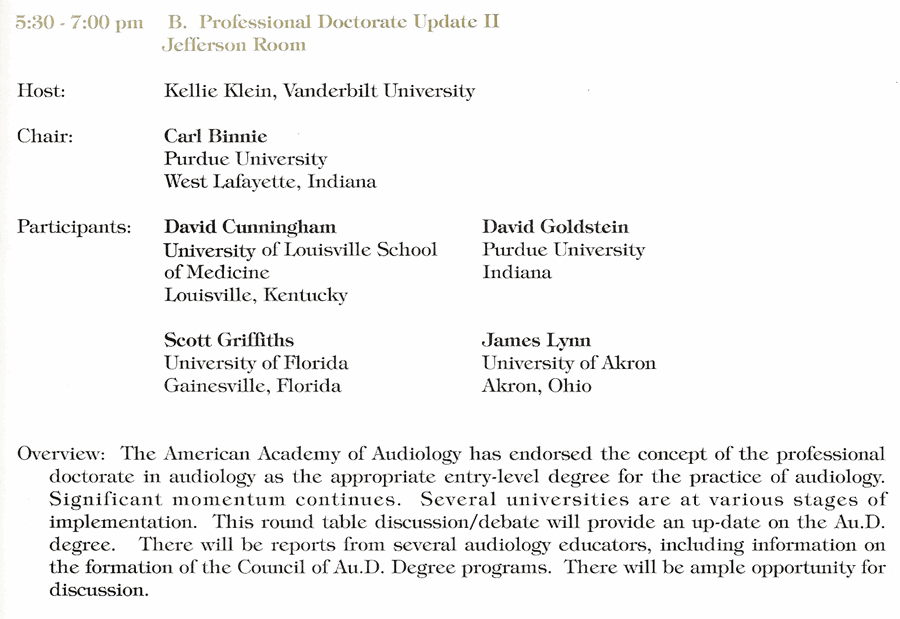
Figure 2. Programme of the 4th Convention of the American Academy of Audiology in 1992,
documenting progress in the development of a doctoral-level education.
James Jerger had, since his term as first president of the AAA, voiced strong support for establishing a Doctor of Audiology (AuD) degree for clinical practice. In 1996, the first three doctors of audiology graduated from Baylor College of Medicine in Houston Texas under the direction of Dr Jerger. For over 20 years before the development of the AuD programme at Baylor College of Medicine, Dr Jerger had overseen a well-respected PhD programme there. Within the next few years, in the late 1990s, a growing number of universities with master’s level audiology programmes developed curricula for a four-year Doctor of Audiology degree and transitioned their educational programmes from masters to doctoral degrees. Licensure boards governing the practice of audiology within selected states began to introduce legislation requiring the AuD for newly graduated audiologists, while audiologists already practising in the states with a master’s degree were allowed to keep their licence and to continue providing clinical services.
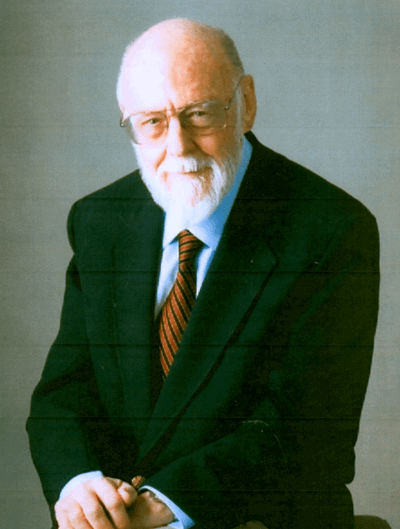
Figure 3. James Jerger, whose many contributions to the profession of audiology
include inspiring formation of the American Academy of Audiology and serving as its first president,
plus developing the first Doctor of Audiology program at Baylor College of Medicine.
“By the 1980s audiologists were utilising rather sophisticated diagnostic techniques such as the auditory brainstem response.”
Recognising the difficulties associated with a two-tier master’s level and doctoral level profession, responding to a demand for doctoral level education among practising audiologists, and utilising then-new technology for online instruction, four universities introduced an innovative distance learning option for earning an AuD degree. As seen in Table 1, these universities with distance learning programmes permitted a remarkable number of practising audiologists to transition from the masters to the doctoral level degree. In a relatively short period of time, a substantial proportion of audiologists in the USA had elected to pursue the new academic credential. Beginning in 2007, a Doctor of Audiology was required for the practice of audiology anywhere in the USA.
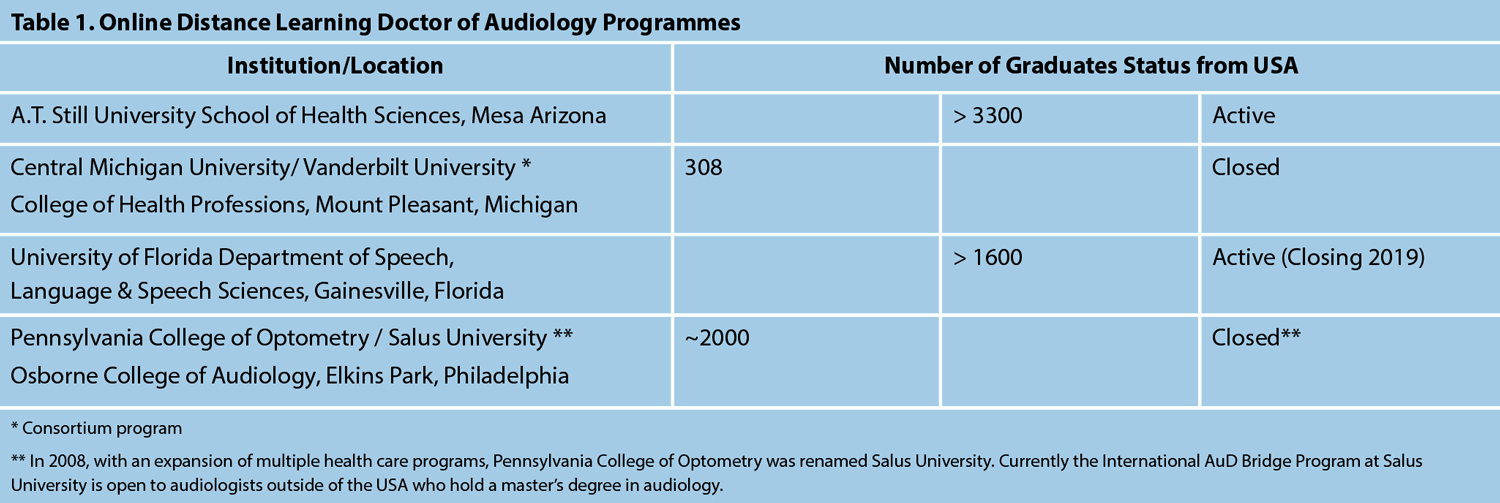
References:
1. Hall JW III. Introduction to Audiology Today. Boston, USA; Pearson; 2014.
2. Bergman M. On the origins of audiology: Wartime military audiology. Audiology Today. Monograph No 1. 2002.
www.audiology.org/sites/default/
files/audiologytoday/
2002ATJanSpecial.pdf
Last accessed November 2018.
3. Jerger J. Audiology in the USA. San Diego, USA; Plural Publishing; 2009.
4. Jerger J. James Jerger: A Life in Audiology. San Diego, USA; Plural Publishing; 2017.
Part II of the series will review the current pathway for becoming an audiologist in the USA.



